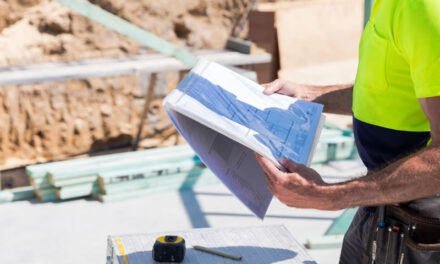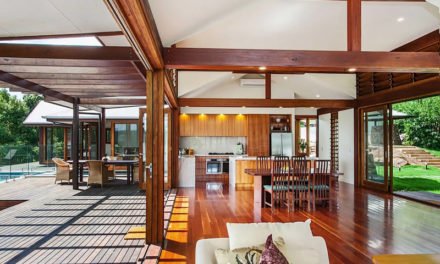We spoke with Wayne Brady of Westview Frames & Trusses about increasing margins within the sector and dealing with ongoing labour issues.
Wayne Brady doesn’t focus on the lowest prices. “That’s not our market,” he says of Westview Frames & Trusses. “At our plant, our work is of higher grade. We do a lot of extras, like an LVL plate on top of our wall frames, which are in a bigger section size with bigger nails, apex plates and more substantial engineered trenching.
“Think of it like a car: you happily pay more for something with more reliability and quality. Our builders get fewer deflections, less cracking and less movement in the frames. In a car you might pay double for special features; we ask for an extra $500 or $1000. On a million dollar house, that’s nothing.”
Westview has been under Wayne’s directorship since 2011. In his over-30-year career, he estimates he’s manufactured more than 20,000 homes. “It’s a tough business, and the margins aren’t great,” he says. “But there are ways we can do things better, both as businesses and as a sector – even when the times force us into a series of difficult situations like the past few years.”
SPECIALTY BUILDS
Fabricators are often pressured by price fluctuations and tight margins. One way Wayne has worked around this is taking on more specialty jobs.
“I’ve been doing wall panels for Blue Eco Homes for several years,” he says. “The owner, Joe Mercieca, was put onto us by a business that supplies both of us. He builds to Passivhaus standards, so when he came to us, he had really specific goals in mind.”
Passivhaus builds require a fine degree of accuracy so that the final structure has very high airtightness and energy efficiency.
“Joe’s a great client because he was happy to sit down with us and explain what he wanted and why, and together we worked out how to achieve it,” Wayne says.
“We’ve built a custom framing jig to make his panels. There were some excellent ones on the market, but at a price I couldn’t justify. So we worked out what we needed – essentially it’s just a squaring table that lets you flip the frames so you can work on both sides – and we made it ourselves out of parts. It’s ugly, but it works and it takes up about half the space of the ideal machine available from a supplier. That was $150,000; we built this for $14,000 and my staff love it.”
Despite requiring specialist tooling and collaboration on the wall panel design, the partnership has been lucrative. “Joe’s turning out a prestige product,” says Wayne. “It requires significantly more accuracy from us – it’s more like joinery than standard framing and takes a lot longer. But the margins are 10-15% better overall because of the volume of timber, the time involved and the fact that you’re marking up a higher-costed item.”
One of the advantages of Passivhaus is that its buyers are highly motivated clients who understand the value of the product and the importance of quality.
“That said, we save them a lot of money,” Wayne says. “Because we do so much of the work in the plant, it’s much faster for Joe to put them up on site. He gets a level of finish and precision they just wouldn’t be able to manage on site and my labour rates are charged out at, say, $25 or $28 an hour, while on site he’s paying trades $70 an hour.”
Wayne encourages other fabricators to look for similar opportunities, including Passivhaus, insulated panels and cassettes. He says, “The margins are better, because there’s a higher volume of timber. But it’s about more than that. If you think you’re selling timber in a truss plant, you’re not. What you’re really selling is time. Timber is just a component.”
One note of caution: he has had a number of builders ask for ‘like you do for Joe’, to which he answers no. “If you have a client come to you with a specific system, that’s their intellectual property,” Wayne says. “Yes, it puts you in a good position to be able to do something similar, but you need that second builder to work out their own system.
MANAGING SUPPLY
At one stage during the timber shortages of the past three years, Wayne was supplying other local truss plants from his store.
“I was lucky,” he says. “We have very good long-term relationships with our main timber suppliers: Timberlink, OneFortyOne and Meyer Timbers. We’ve consistently bought from them for many years because of their reliability. In a normal market, they may not be the cheapest but, like us, they bring quality. When things went south, they were able to keep up my timber feed.”
Very early in the pandemic, Wayne realised the likelihood of shipping delays: “So I got onto my LVL supplier and asked how much I could buy. They said whatever I could pay for, so I pretty much bought them out of their higher grade product. A month later the price had doubled and they were on the phone trying to get some of it back. It was like a stock market gamble that paid off.”
More difficult was sourcing I-joists for the plant’s floor systems. Westview’s key supplier is in WA and the lead times blew out dramatically over the pandemic.
“We were at 12 weeks at one point, which was just holding everyone up,” says Wayne. “We worked with Mi-Tek to deliver a posi-joist alternative, which was effective, even though I had to buy extra equipment. One of my major builders has gone over to them entirely and he’s not going back. We like to buy local, but we do need more supply in Australia.”
It was a difficult period because builders were conscious that every month’s delay meant a rise in prices and so were pushing for uncertified alternatives, which he refused.
Wayne does buy some quality European timber, particularly for wall studs, which he buys precut at very specific sizes. “They’re reliably exact. There’s a market for our local sawmills to deliver extremely consistent, precise cuts if they wanted to,” he says.
CHANGING THE FUTURE
While supply issues have improved, staffing is an ongoing problem.
“My older workers are very stable, but the younger generation – it’s very hard to keep. Their way of work and life is so different nowadays,” Wayne says. “Pay is a big part of that. My trainees are getting less than they can earn in retail and doing a much more demanding job.”
One solution would be to institute a framing apprenticeship. “Tradies get paid nearly three times what our experienced staff are getting,” Wayne says, “and, as apprentices, have a lot more government support in their funding. The guys and girls here work physically harder than the people on site. They’re building structural components, which is technical manufacturing work. That should be acknowledged.”
He points out that staffing shortages are inhibiting productivity across much of the sector: “And that’s a real risk, because if we can’t grow, we’ll lose market. Maybe to steel, maybe to big-box operations like Bunnings.
“F&T plants can’t compete against big firms backed by shareholders,” Wayne adds. “Most of us aren’t able to expand because we can’t compete with superannuation funds when it comes to buying up land. It’s making life hard for privately owned companies who don’t have spare millions at the ready.”
He does, however, see areas where improvements could be made without restructuring the industry or economy.
“Like everyone, I’ve got a few opinions,” Wayne says with a grin. “I don’t get why we use concrete slabs so much in this country. They’re rarely level and most builders don’t level their frames, despite the fact they’re told to in the Australian standards. Blue Eco does, and Ichijo homes – a Japanese company I’ve worked with – but they’re the exceptions. Most tradies just put the frames up without adjusting the levels and a lot of problems start that way.”
If Wayne had his way, we’d be using a lot more sub floor systems. “There are so many advantages. You can get under house storage, you pay vastly less in earthworks, you take all those trucks lugging dirt around off the roads and you disrupt the flow of water over the land much less. Cut in for the garage, sure, but otherwise just go with the lay of the land and save $100,000 in landscaping and drainage.”
He recommends keeping an open mind when it comes to machinery supply. “I’ve worked with great teams, like Ed from Vekta and Randek,” says Wayne, “but I’m as likely to commission my own design from a local engineering company when we want something really specific. I think all those small firms will be gone in another 20 years, so this is our last chance for that diversity.”
At the other end of the process, Wayne wishes customers knew more about their frames and trusses. “They’re missing out on a lot what they could be offered,” he says. “The clients don’t know what they can get.
“I keep coming back to the car analogy. Right now, most builders are offering people a basic car when it comes to their frame. But most customers want heated seats and a good sound system, and they’ll pay for that. If you told people they could get a home that has a squarer frame, is much less likely to develop problems and will be stronger for the life of the home, and it will only cost them $500-$1000 more, they would absolutely go for that.”
Westview’s builder clients are already, in effect, paying for the heated seats, but only the specialist ones like Joe Merceica are explaining the ‘why’ to the homeowners, which Wayne sees as a missed opportunity.
“As a sector, we need to be making the case for why people should be building in timber,” Wayne says. “These are all parts of the one issue and we need to sort them now because there’s going to be a huge demand on us when the Green Star requirements start lifting on new builds. You won’t be able to get those insulation ratings in steel and we need to be ready for the demand that will come. With the extreme heat and cold of our climate, only timber delivers the natural insulation qualities that will help keep people’s energy bills low. Plus the fact you can just plant more trees to replace the ones in your house frame.”
This focus on the near future makes the uncertainties of the coming year less of a concern for Wayne. “I’m not too fazed about the reports of an upcoming slowdown,” he says. “If only half the homes are going to be built, then I’ll just supply to that half and it may mean that the F&T plants start to get a more reasonable commitment in staff.”
For more, visit www.westviewframesandtrusses.com.au
Image: A high level of precision is key to the quality delivered by Westview. Wayne Brady says that frame and truss fabrication is a skilled trade that would benefit from a recognised apprenticeship.












